Disaster Reconstruction Monument in Takamori Town (3)
The heavy downpour in June 1961 caused disasters such as river overflows, landslides, and mudslides in the Ina Valley of Nagano Prefecture.
Last year I visited the Takamori Town Folk Historical Museum, and it was then that I first saw the disaster reconstruction monument on the museum grounds and did some research.
I learned that there were several other stone monuments, and in my second article I wrote about one near the former Shimoichida School.
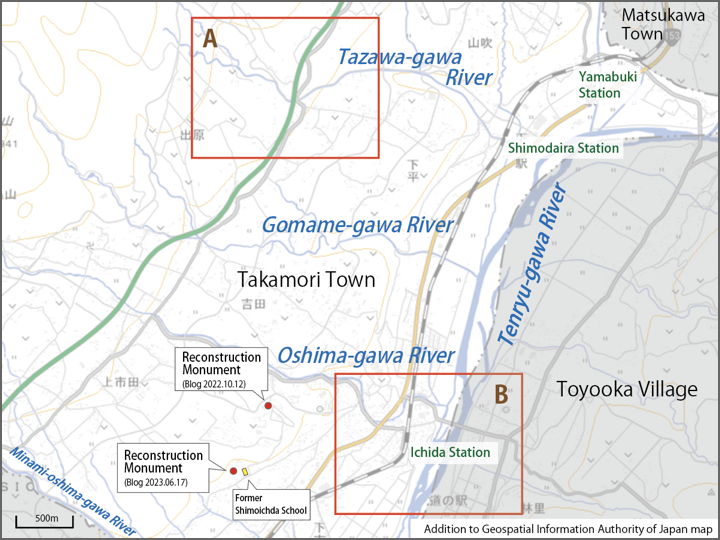
I have recently checked other stone monuments, so I will write about them in this issue.
The map above shows the locations of the monuments I have visited so far. The locations of the monuments I saw this time are indicated on the enlarged map of the red frame.
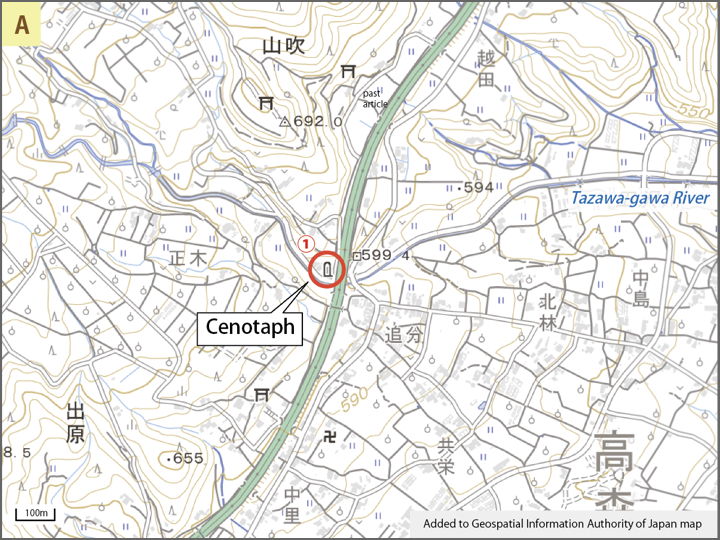
The first monument is located near the Chuo Expressway.

From the road, the monument looks like this. The grass was cut around the monument, so it seems to be well maintained.
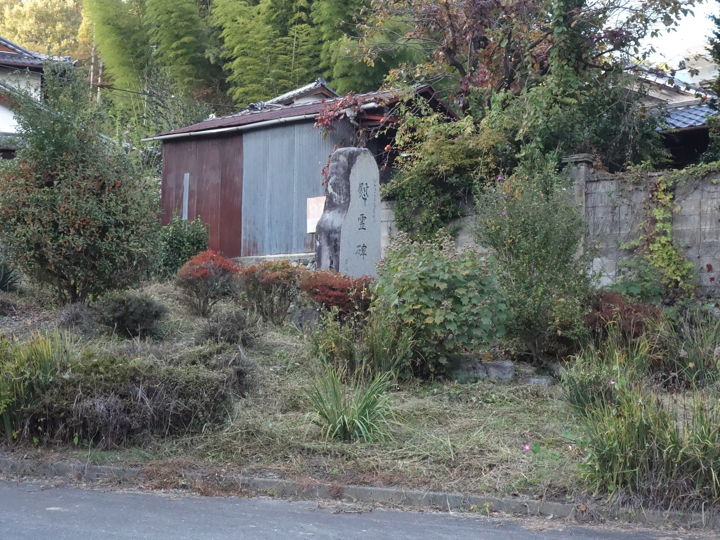
On the front of the monument is inscribed “Cenotaph for the Victims of the Disaster of 1961". On the back of the monument, the names of the 11 people who died were written.

On June 27, 1961, the fire brigade was on the lookout for rivers in the town. When there was a threat of flooding in the afternoon, the mayor ordered the entire fire brigade to mobilize and to work with the local people to prevent flooding.
Around 7:00 p.m., just after the evacuation order was issued because of the danger, flash floods struck, swallowing people along the Tazawa River.
The bodies of those swept away were searched and found on the 28th and 29th, but two people remained missing.
The youngest of the dead was 14 years old. She was working with adults and was caught in the landslide on her way home when the children were instructed to leave.
The monument was erected in December 1971. The name of Takamori Town is written in the lower left corner of the front side, so the monument was probably erected by the town.
The following is an enlarged map of area B.
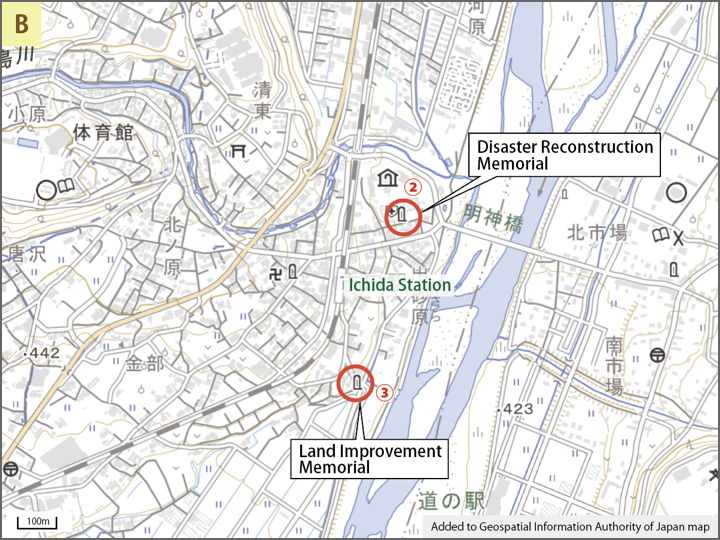
The second monument stands on the grounds of the Shimoina Kosei Hospital.
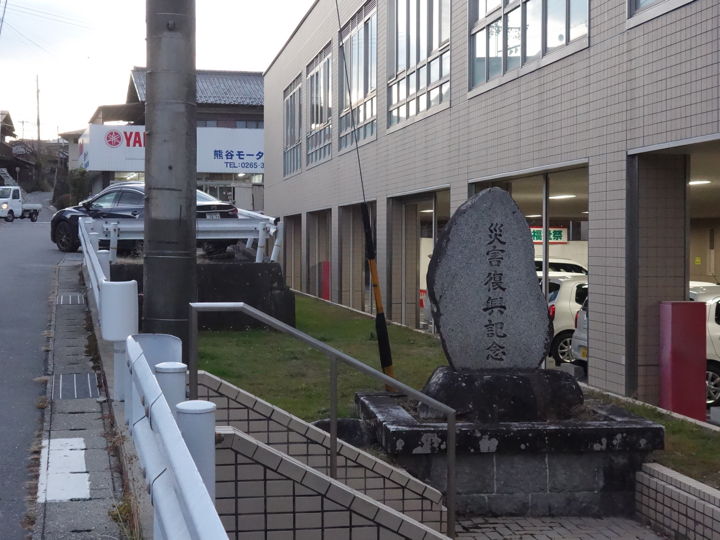
The words on the monument here are “Disaster Reconstruction Memorial”.
The words on the reverse side of the monument are transcribed as follows.
'In late June 1961, the Ina Valley suffered unprecedented devastation from a torrential downpour caused by the rainy season front, and our Tenryu-sha Ichida Factory also suffered catastrophic damage from the collapse of the Oshima River embankment. The restoration of the plant was accompanied by numerous difficulties that are beyond description, but the members and employees of Tenryu-sha worked together to restore the factory, and with the assistance of related organizations, we overcame the obstacles and were able to not only restore the plant, but also created a foundation to turn the disaster into a blessing.
This monument is erected to commemorate the reconstruction of Tenryu-sha’s Ichida Factory from the disaster, and to remember the hardships of those who worked so hard, and to strive to achieve Tenryu-sha’s mission.
November 2, 1963
Shimoina Raw Silk Marketing and Utilization Agricultural Cooperative Union, Tenryu-sha
(Names of directors below)’
A hospital now stands on the site, but it seems that the Tenryu-sha was located here at that time.
During the Taisho Era (1912-1926), the silk spinning cooperatives in Shimo-Ina were in financial difficulties, and in 1918, a federation, the Nanryu-sha, was formed, which was dissolved in 1921 to broaden the scope of participation and became the Ina-sha. However, due to the recession of 1928~29, a union federation, Tenryu-sha, was formed to rationalize management.
In 1936, Tenryu-sha Ichida Factory was built at this location and began operations.
At 0:40 a.m. on June 28, 1961, the Oshima River collapsed and the factory was swallowed by water. The employees in the women’s dormitory had to evacuate through the muddy waters late at night.
After the disaster, Tenryu-sha installed new machinery and resumed production.
However, the Ichida factory was closed in 1969 due to the integration of factories in response to the need to improve the production environment.
Now, the third monument is located near the bank of the Tenryu-gawa River.
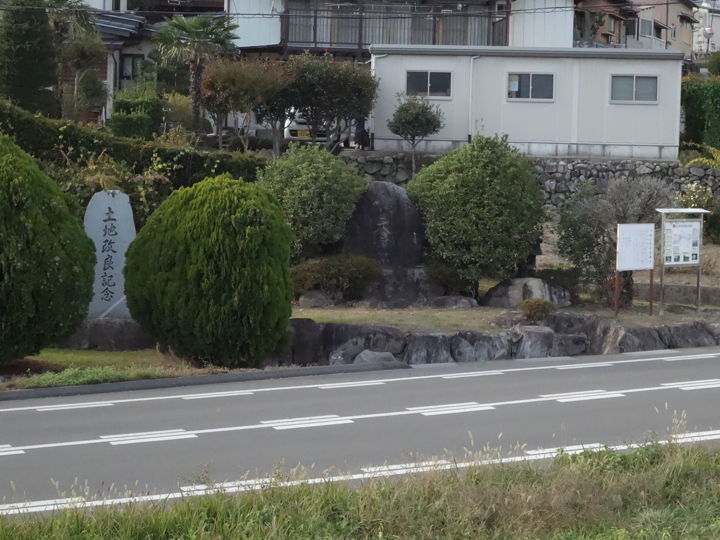
The monument on the left in this photo is marked “Land Improvement Memorial.

I transcribe the text on the back.
'In June 1961, a torrential downpour from the rainy season front hit the Ina Valley, causing rivers to overflow. The Sobei Dike finally collapsed on the evening of the 29th, and more than 40 hectares of rice paddies were washed away. In the process of restoration, the levee line had to be backed, resulting in the loss of an additional 10 ha of arable land.
Despite the misfortune that followed the disaster, the farmers concerned demonstrated fortitude and decided to improve approximately 50 ha of arable land that had escaped being washed away and redistribute it among all those involved. The enthusiasm of the farmers led to the cooperation and support of related higher authorities, and in the spring of 1968, seven years after the disaster, all the land redistribution work was finally completed.
A monument is erected to commemorate the recovery from the disaster and the completion of the land improvement work.
Spring of 1969.
Shimoichida Kawara Cultivators’ Association’
Next to it is a stone monument of Suitengu (a god of water). The former Suitengu was swept away in 1961, but was rebuilt in 1983. Since there is another Suitengu nearby, this one is called “Suitengu in Showa".

The area in front of the monument is an embankment. This is where the Sobei Dike used to be.

The Sobei Dike was planned by the Iida Clan in 1748, started in 1750, and completed in 1752. Although the embankment was breached and washed away in 1961, a part of it still remains, and the rocks and stone monument are designated as a historical site in Takamori Town.
[Related articles]
'Disaster Reconstruction Monument in Takamori Town (2)' (2023.06.17)
'Disaster Reconstruction Monument in Takamori Town' (2022.10.12)
[Reference] (written in Japanese)
“History of Takamori Town, Vol. 2" (Takamori Town History Compilation Committee, 1975)
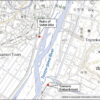

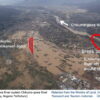
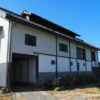
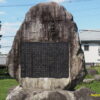
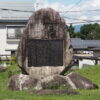
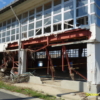
Discussion
New Comments
No comments yet. Be the first one!